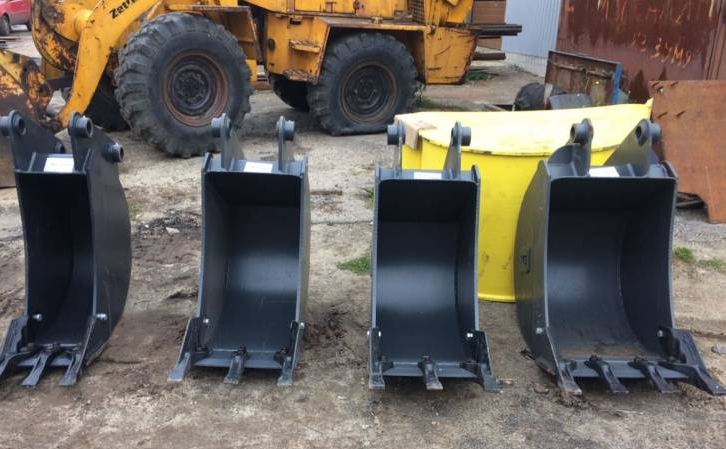Development of Documentation
In the first phase, engineers and planners. They study the purpose of the bucket and the excavator model, because we need to understand what the bucket will be used for and what machine it will be fitted to. Then a decision is made regarding the steel grade and thickness of the steel sheet that the bucket and its components are to be made from. These calculations are then transferred to the designer for further modelling and the preparation of the technical documentation.
For further fabrication of the bucket for the excavator.
Metal Cutting
According to the technical documentation, material is cut, and the thickness and dimensions of the solid parts are taken into account in order to choose the cutting method: the most frequently used cutting methods are plasma cutting, water-jet cutting, metal shearing, as well as mechanical cutting with picks.
Metal Processing (sheet bending, turning and milling)
At this stage, bending, turning and milling work is carried out, all parts are adjusted to technical original dimensions. Processed edges from various scorings and burrs.
Assembly and Welding
This is the most critical point, because of the strength and correctness of the joints depends on quality and service life of the product.
As a rule we use welding and bolt connections at this stage.
Quality Control
Quality Control involves checking the quality of welds, bolted connections, checking the accuracy of dimensional and fitment sizes, stress tests and ergonomic design.
Anti corrosion Treatment, Polymer Coating and Painting
The anti-corrosion treatment of all surfaces is performed, as well as the polymer coating of non-working parts, and then the multi-layer painting.
We manufacture buckets for all well-known excavators: Komatsu, Caterpillar, Hitachi, Volvo, Hyundai, Doosan, JCB, Liebherr, Case, New Holland and other well-known brands.
We use only original manufacturer’s dimensions. A bucket made by us, you will not distinguish from the starter bucket.
We may occasionally make some changes to the bucket, just to protect the bucket and extend its service life.
